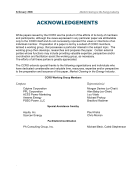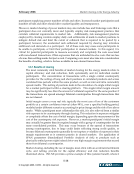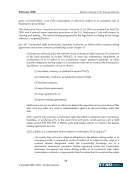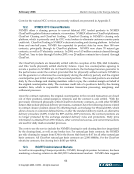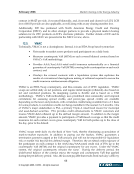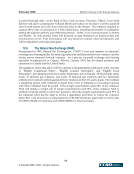February 2006 Market Clearing in the Energy Industry 3-7 3. THE CONTEXT FOR MARKET CLEARING The practice of clearing is well established in many financial and commodity industries, such as the bond and metal markets. However, in making recommendations that will promote its appropriate application and development in the energy industry, it is important that a common definition of the term be established, that its current use be understood, and that the challenges facing the increased use of clearing be identified. 3.1. Clearing defined Clearing is the process and procedure through which a clearing house or similar organization becomes the buyer to each seller of a contract, and the seller to each buyer, and assumes responsibility for protecting buyers and sellers from financial loss by assuring performance on each contract. When there are many participants in a clearing process it is referred to as multilateral clearing, multilateral in the sense that a participant’s trades can be netted, as appropriate, against multiple counterparties. All U.S. futures exchanges have successfully used multilateral clearing systems since 1925. Clearing provides the benefits of multilateral netting of both initial margin (i.e., collateral required by the clearing entity to protect against losses incurred if the entity is required to cover the position on a default) and variation margin (i.e., mark-to-market value of positions), centralized collateral management, standardized margining requirements and a creditworthy clearing entity that is the novated (“novation” is generally defined as the transfer of rights and obligations in relation to transactions) counterparty to the company clearing the position. 3.2. The rationale and motivation for market clearing Efficient energy markets produce two benefits: lower energy prices for energy consumers and more effective capital investment by producers. Market efficiency is achieved when price formation is transparent, market instruments and processes are standardized, the set of hedge instruments is complete, liquidity is plentiful, and risk can be managed at a low cost. Market clearing can improve energy market efficiency by increasing liquidity and lowering the all-in cost of managing credit risk. Market clearing can increase liquidity in two ways: • By means of netting, clearing can free up working capital (collateral) for productive, operating uses capital that would otherwise be committed to covering credit exposure. This benefit is realized through a reduction in net exposure and, therefore, a reduction in required collateral. • By standing between trading counterparties, clearinghouses make buyers and sellers of energy and energy risk management products (derivatives) indifferent to the credit standing of their trade counterparties. This not only enlarges the number of feasible counterparties but also reduces the use of position limits and reduces the costs and augments the use of bilateral credit operations. This benefit
Purchased by unknown, nofirst nolast From: CCRO Library (library.ccro.org)


